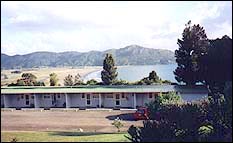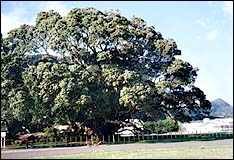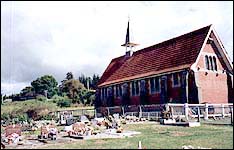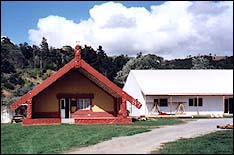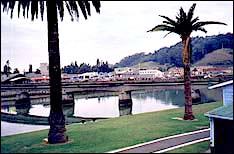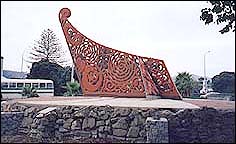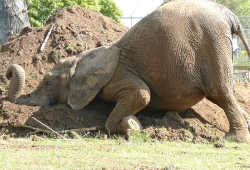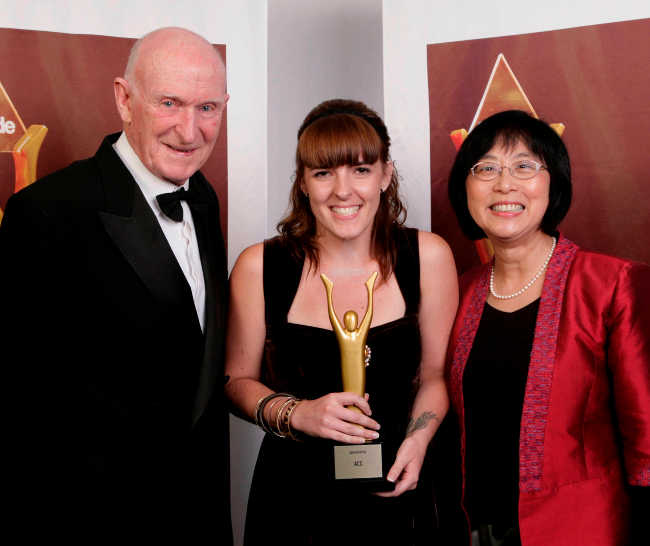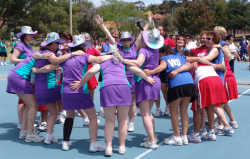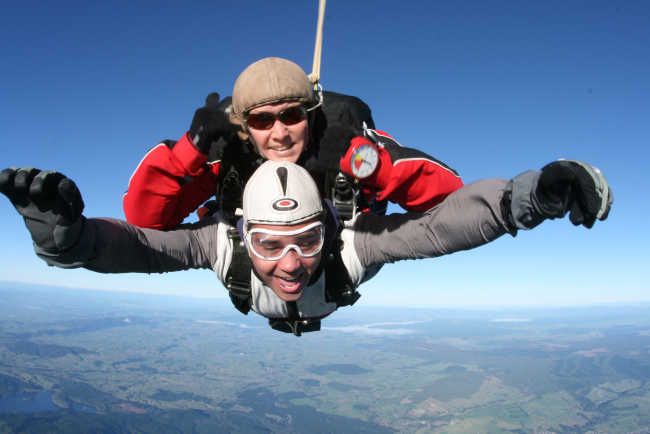Written and Photographed by Kate Methven – 28/7/00
Taking SH 35 round the coast to Gisborne Until quite recent times this road was one of the lesser roads of New Zealand as in past years it had the reputation of being a dusty nightmare. This is now no longer true as it is now fully sealed making it a comfortable 100km p.h. road now part of the Pacific Highway. Although there are stretches of road with no amenities, petrol, limited accommodation and some meals are obtainable at regular intervals. However, we took ample supplies for morning and afternoon tea breaks as well as lunches so that we could pull off the road to relax on the beach whenever we felt like it. Nothing worse than looking for somewhere to buy food and finding nothing for miles and miles (or so it seems!)
Te Kaha As you follow the coastline you may well be tempted to stop at one of the many beautiful beaches -Whitianga Bay just 50kms from Opotiki offers rock fishing, diving and crayfishing. However, if jetboating is of interest stop at the Motu River about 6kms before Whitianga Bay – you can take a part day scenic adventure which includes a full commentary and a short bush walk.
Whaling Centre Te Kaha is a popular holiday spot situated on a headland and surrounded by wonderful beaches and bays. The local hotel advertises meals and accommodation but when we visited at the end of March was not open for lunch – we were glad we’d packed our own!! Te Kaha was an old whaling settlement settled by missionaries in the early days. All the commercial activities in the area were connected to whaling but as the whale numbers decreased farming has become the main income of the local (predominantly Maori) people.
Raukokore and Waihau Bay Almost 100km from Opotiki you will come across a local landmark – an Anglican Church standing on the promontory. Just a few kilometres further on you will come to Waihau Bay with its famous early Post Office which was opened by James Walker in this remote area way back in the 1870s. The general store has a local information centre so you can find out first hand about all the local coast activities.
Hicks Bay In times past a freezing works and port were established at the western end of the Bay but both are not now in operation. Maybe now that there is a large forestry development on the East Cape, the port will be developed again. Hicks Bay marks the start of the large sheep and cattle stations which extend right along the East Coast to the south of the North Island.
We stayed at the Hicks Bay Lodge Hotel which has a licensed restaurant.
|
|
| Hicks Bay Lodge Hotel – old style tourist accommodation |
When checking in we ordered dinner which we were told would be served at 6pm……this is the middle of nowhere!! However an hour or so later the receptionist called to say dinner would now be around 6.30pm as the Chef had forgotten to put the oven on!! We were pleasantly surprised to be served a delicious meal of locally caught fish turning down the roast dinner which may or may not have been properly cooked!
Te Araroa This settlement is about half way between Opotiki and Gisborne and is about 10kms from Hicks Bay. After turning off the main highway you drive towards the cluster of houses and the school. On the beach front in the school grounds stands the largest pohutukawa tree in the world – the Maori Christmas tree – 350 years old, 40 metres in width and 21.2 metres high.
|
|
| Giant 350 year old pohutukawa tree |
East Cape Lighthouse At first sight there seems to be no way out of Te Araroa but a well worthwhile trip is to take a drive along the road leading to the East Cape lighthouse. This all weather road runs along the waterfront through private land so you must watch out for sheep or cows crossing your path.
East Cape lighthouse is the most easterly in the world and a climb up is well worth it, especially if you are there at sunrise on a clear day.
Te Puia Springs About 70 kms south of Te Araroa is the small village of Te Puia where there is evidence of thermal activity. There is a very pleasant golf course just north of the village which has a well stocked store, motel and Visitor
Information Centre.
A detour off the main road will take you to Waipiro Bay. Once a bustling coastal township it is now a sleepy hollow with a beautiful beach, a school, a fishing ground and three historical Marae and a church.
|
|
| The local church at Waipiro Bay |
|
|
| One of the historical Marae at Waipiro Bay |
Good spot to stop for a cup of coffee providing you have taken your flask with you!
Tokomaru Bay This is a popular holiday spot in the summer. There is a store, food market and also a caravan park. This is a stronghold of Maori culture with four active marae. Great beach for swimming especially if it’s been hot driving in the car. Even I couldn’t resist it!
At the eastern end of the Bay there is a tavern and just further on at Waima, is an old wharf and the remains of a freezing works which closed down in 1952. The New Zealand Shipping Coy. had a depot here and the harbour operated until 1963, The old buildings now house crayfishermen and craftspeople – local potters and weavers etc.
Tolaga Bay This is the largest town since leaving Opotiki 279kms north. There is a shopping centre where all the people from outlying districts come in order to stock up. Everyone let me go to the head of the queue with my few items for a picnic lunch – no one seems to shop here for just a few items!
Captain Cook landed here in 1769 and the streets of the town are named after his crew. The beach here is excellent for swimming and fishing. What is probably the best camp site on the east coast can be found three kms out of town, right on the beach at the end of the bay where the rocky shoreline begins again. The very long jetty was used as a wharf for the area in the days of coastal shipping.
Cook’s Cove walkway Just near the wharf is the start of the 5km Cook’s Cove walkway which takes about 2hrs 30mins. You will get spectacular views of Cook’s Cove and the hole in the cliff wall – well worth it if you have the time.
In the middle of the quiet township I found something totally unique – a cashmere factory! This is New Zealand’s own cashmere produced in classic tradition. There was a wide range of women’s and men’s styles all available at factory prices…….who could resist!
Gisborne – First to see the light Gisborne, population 33,200 is a busy, sunny, river port city.
|
|
| View of the Wairoa River, Gisborne |
Because of its closeness to the International Date Line this is the most easterly city in the world and is the first on which the sun rises.
Consequently on 1 January this year the eyes of the world were focused on the activities taking place here to herald in the dawning of a new century.
The local council had spent months beforehand sprucing up the city and planted many trees and placed hanging baskets everywhere. Hotel and motel operators braced themselves for the expected influx of visitors and the whole atmosphere was one of great festivity. Even when we visited in late February the townsfolk were still riding on a high and keen for their popularity to continue.
Maori Carving Near the river in Gisborne stands Te Tauihu Turanga Whakamana, a Maori carving of a prow to honour Maori seafarers.
|
|
| Te Tauihu Turanga Whakamana |
Captain Cook’s first landfall It was here in Gisborne at Kaiti Beach in 1769 that Captain Cook first set foot on land and so it was here that New Zealand’s European history began. A granite memorial marks the spot of his landing. On Kaiti Hill a bronze statue of Cook, overlooks the area. Across the bay are the white cliffs of Young Nick’s Head named after Cook’s crewman who first sighted New Zealand.
Things to see and do We decided to take time out and visit one of the city’s main attractions – the Eastwoodhill Arboretum, situated at Ngatapa (35km from Gisborne). Anytime of the year is a good time to visit this 140ha aboretum.In spring you can see large plantings of daffodils, and in summer you can take shaded walks which we really enjoyed, but we were told the rich autumn colours are just magnificent.
Wine Growing Gisborne’s wines consistently win awards for the best wines in the country. Chardonay does particularly well and can definitely be recommended. Why not take a visit to a winery whilst you are in the area and sample some of the wares yourself ? Wish we had been able to do that.
Tourist Information There is just so much to do and see around the East Cape so make sure you contact either Gisborne or Opotiki Information Centres before you leave so that you can make the most of your time.
Gisborne Visitor Information PO box 170 Gisborne Email:info@eastland.tourism.co.nz
Opotiki Information Elliott St, Opotiki Ph 0-777-315 8484 (No Email as yet)

